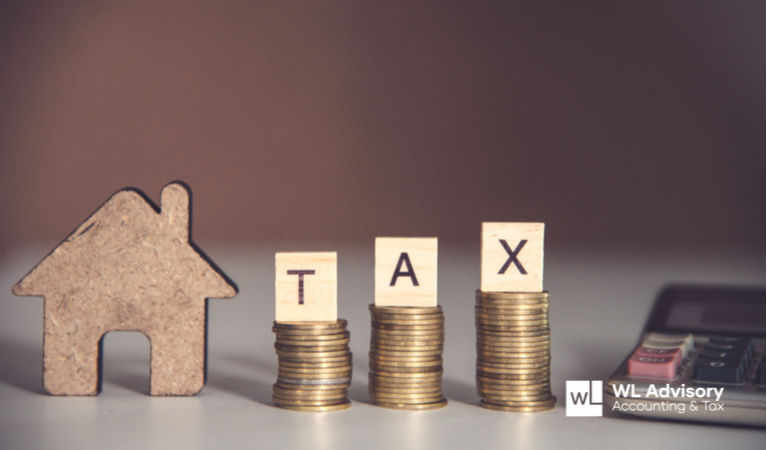Tax and Property Price Increases
With residential property values on a sharp upward trajectory, from a tax standpoint, what does this mean for owners and investors of this style of dwelling?
Introduction
Domain’s End of Year Wrap revealed that in 2021, Australian house prices rose an astonishing 21.9%, the fastest annual rate of growth on record! Viewed through a taxation prism, these increases mean practically nothing unless the owner is selling or otherwise disposing of their property. If the property is retained, then the increases are merely a “paper gain”. By holding onto the property there generally won’t be any CGT consequences.
The obvious question then arises, what are the consequences from a tax perspective where an owner does decide to cash in on the boom and sell their residential property?
Rental Property
If an owner has a typical rental property that they have not lived in, then 100% of the property will typically be subject to CGT upon the sale. It follows that sellers will be paying more CGT as property prices increase (but of course enjoying more sale proceeds at the same time).
Broadly, the legal owner of the property (the party whose name is on the title deed) will be liable for any capital gain made from the property when it is sold.
If a property is owned as tenants in common – whereby the co-owners’ agreement specifies equal or unequal shares in the property co-ownership (e.g. 30% and 70) – the taxation consequences will be shared in those proportions.
If a property is owned as joint tenants, then the taxation consequences are generally shared 50/50.
Tax Rate
Where individuals own the property, any capital gain or revenue earned from the sale will be assessed at individual marginal tax rates, plus Medicare levy. Consequently, net capital gains can be taxed at up to 47% before applying any discounts. For this reason, it is more tax effective for lower income earners to have the property in their name solely. For example, a spouse who does not work.
On the other hand, if an owner is negatively gearing a property, then it is more beneficial from a tax perspective for a high-income earner to own the property. Put very simply, this is because their taxable income (which is reduced by negative gearing) is taxed at a higher rate and therefore they will get more bang for their deduction. Be mindful that where a negative gearing strategy is being considered, the owner needs to be able to sustain the losses that come from this. With negative gearing, the property expenses are more than the rent…can the owner sustain these losses long-term?
Tax Tip
Aside from tax, there are other key factors to consider when determining whose name or which tax structure (for example, company etc.) the property should be in, including asset protection. These factors should be discussed with your advisers.
Family Home
If the property being sold is the family home and it qualifies for the main residence exemption, then the owner can cash in on the current property boom with no CGT consequences upon sale!
To recap, the main residence exemption offers a full exemption from CGT where the following conditions are met:
- The owner is an individual
- The dwelling was the individual’s main residence throughout the period of ownership
- The individual did not acquire the ownership interest either as a beneficiary or trustee of a deceased estate.
Note that there is a two-hectare limit on the area of land that is covered by the exemption. Further, spouses (and also an individual) can generally only have one main residence at any one time.
Partial Exemption
However, only a partial exemption from CGT will be available where the dwelling was a person’s main residence for only part of their ownership period. This can occur where:
- The dwelling was not occupied as a main residence when it was first practicable to do so after its acquisition
- In renting out the property, the six-year rule was exceeded (under this rule, an owner can rent out their main residence for up to six years at any one time and maintain the full main residence exemption provided they do not claim another dwelling as their main residence during this time – other conditions also apply)
- The four-year period for building a dwelling on vacant land has been exceeded
- The home was used to produce income, such as part of it was used as a place of business, or it was rented out in part or in full.
If an owner is only eligible for a partial exemption, any capital gain or loss is pro-rated by reference to the part of the ownership period in which the dwelling was not their main residence:
Key Points
- While property prices are on a steep incline, no CGT consequences arise from this unless the property is disposed of.
- Be mindful of the 50% CGT discount for owning a property for 12 months or more. If an owner was nearing the 12-month ownership threshold, they may wish to consider if possible delaying any planned sale until this time requirement is met.
- If an owner inherited a main residence, to dispose of it tax-free, they must do so within two years of inheriting it. Various conditions apply.
- If a potential owner was contemplating purchasing residential property to rent out, it would be prudent for them to discuss the ownership structure and the tax consequences with their accountant.
If you have any questions, please book a free consultation with us.
WL Advisory is a Chartered Accounting firm. We specialise in accounting, tax and advisory services for individuals and small businesses. Please visit our website for more information.
